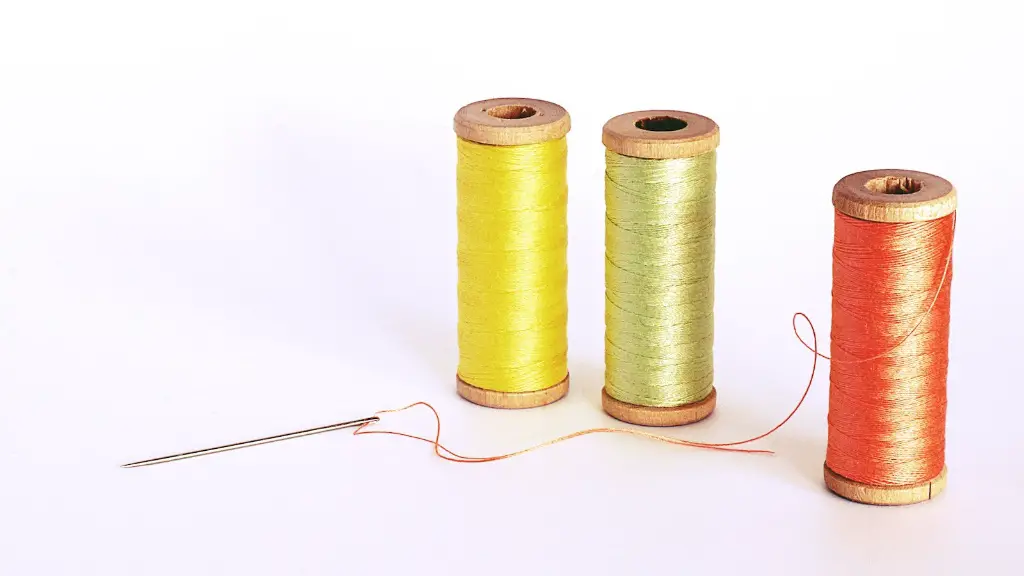What is Needed
No matter how good your sewing machine is, there’s always a chance that you’ll have to repair it at some point. Although there are many professional sewing machine repair centers, it is sometimes cheaper and more convenient to tackle various problems on your own. To repair your machine, you’ll need basic sewing machine parts and some tools, such as a screwdriver, pliers, and Allen wrenches. You should also take into account the type of sewing machine you’re working on because different machines require different parts and tools.
Cleaning the Sewing Machine
The first step in repairing a sewing machine is to clean it. This includes getting rid of dirt, dust, and lint that can accumulate on the machine. Once you’ve finished cleaning it, make sure to lubricate the parts that need it. This will help reduce friction and prevent unnecessary wear and tear on the machine. Additionally, make sure you check the tension of the thread because incorrect thread tension can cause problems with your sewing.
Testing for Problems
If something is wrong with your sewing machine, testing is the best way to identify the problem. To do this, simply test it on a few different kinds of fabric. This will help you pinpoint any areas that might need repair. For example, if you’re having difficulty sewing a certain kind of fabric, then it might be an issue with the needle or the presser foot. It’s important to pay attention to these small details in order to make sure you’re able to get your sewing machine back to working properly.
Replacing Parts
If you’re able to identify the source of the problem, you may need to replace certain parts of the machine. This can include the needle, presser foot, bobbin case, or even the entire motor. If you’re not comfortable with replacing the parts yourself, you can always take it to a professional sewing machine repair shop. On the other hand, if you’re feeling brave, you can order the parts online and replace them yourself. Just make sure you follow the instructions carefully.
Diagnosing Electrical Problems
If your machine starts having electrical problems, you’ll need to start by checking the power cable. Make sure the cable is securely attached to the machine and doesn’t have any frayed or loose wires. You can also use an ohmmeter to test the power switch, as well as any other electrical components. If the electrical components are found to be faulty, then they may need to be replaced or repaired.
Testing the Machine’s Performance
Once you’ve finished fixing the machine, it’s important to test it out to make sure everything is working correctly. To do this, simply sew on some scrap fabric and check for any issues. If you notice any problems, go back and make adjustments until everything works as it should. By running a few tests, you can guarantee that your machine will be in perfect condition when you put it to use.
Caring for Your Sewing Machine
Repairing a sewing machine isn’t an easy task and it can be time-consuming. However, to keep your machine running smoothly and prevent future issues, it’s important to properly care for it. This includes regularly cleaning and lubricating it, as well as replacing parts when they wear out. Additionally, it’s recommended that you store the sewing machine in a dust-free environment and cover it when not in use.
Preventive Maintenance
It’s always a good idea to perform preventive maintenance on your sewing machine. This can be as simple as running it every now and then to keep it lubricated and make sure it’s in good working order. Additionally, you can have a professional inspect and check the machine to make sure all of the components are working properly. By doing this, you can save yourself time, money, and frustration in the future.
Replacing Needles and Bobbins
Replacing needles and bobbins is another part of sewing machine repair that you should be familiar with. Needles become dull over time and will eventually need to be replaced. Additionally, it’s also important to regularly check the bobbin case for wear, as well as any other parts that may be worn or broken. Replacing these parts regularly is essential for keeping the machine running smoothly.
Replacing the Motor
Replacing the motor is one of the more complex repairs you’ll have to do. Make sure that you take the time to properly investigate the issue before taking any action. If the motor is beyond repair, you’ll have to purchase a new one. Make sure to take the time to research the different types of motors and find one that will be compatible with your machine.
Finding Professional Help
If you’re unable to repair the machine yourself, don’t hesitate to seek the help of a professional. They can quickly assess the source of the problem and provide you with the right solution. Additionally, they might be able to recommend some tips and tricks to ensure your machine runs smoothly in the future.
Conclusion
Repairing a sewing machine doesn’t have to be a difficult task if you approach it with care. By taking the time to familiarize yourself with the parts, tools, and steps required, you can ensure that your machine will be in good working order. Additionally, if you’re still having difficulty with repairs or want to ensure they’re done correctly, then it’s always a good idea to seek the help of a professional.



